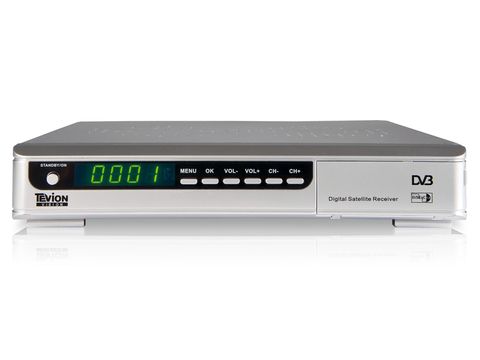TechRadar Verdict
Pros
- +
A well-specified kit, with wall and sucker mount, compass and signal meter supplied
- +
Blind search
Cons
- -
Selection of horizontal channels with test sample unreliable
- -
Impossible to upgrade receiver to a PVR via USB
- -
Sucker mount not suitable for vertical mounting (e.g. windows)
Why you can trust TechRadar
The Tevion 28208 satellite-in-a-suitcase package is the sort of deal likely to show up in budget supermarkets and be quickly snapped up.
It should be noted that this ultra-portable system – comprising dish, universal LNB, standard-def receiver and all accessories – is also sold as the Philex SLX mini digital satellite system and that pricing can vary wildly among suppliers from the guide price given here.
The kit is intended for vehicles of those who are 'on the move', such as truckers and caravanners. As such, the 28208ALD receiver can be powered by a small 12V 'wall wart' power supply, or plugged into a cigarette-lighter socket.
Build and connectivity

The lightweight plastic 35cm off set dish and LNB assembles with relative ease; as supplied, the dish mounting plate is fixed to the dish. To this is fitted the LNB boom and a choice of wall-mount or suction cup.
Both are coupled to the dish, courtesy of a ball-and-socket arrangement that facilitates azimuth and elevation adjustment. Once the satellite is found – included in the package is a compass and very basic in-line meter – the mount can be locked.
There are no scales on the mount and although the compass can be used in conjunction with the table in the manual to determine azimuth, overall alignment is a trial-and-error affair. The wall-mount is ideal for permanent installations; removing the dish when it's not required is, however, simple enough.
A 10m length of co-ax is supplied, as is a useful flat-cable gadget that allows signals to be passed through closed windows.
We're quite taken with the idea of the suction cup, which is suitable for temporary use. It's intended for glossy surfaces, which will provide a tight seal. It helps if the surface area is moistened first. Simply place the cup on the surface, and push the lever down to lock it in position. Unfortunately, there's insufficient range in the ball-and-socket movement to facilitate placement on a window – it's designed for mounting on a horizontal surface, such as the roof of a car. In any case, the instructions recommend that the suction pad is not used on glass surfaces.
When the weather is good, this ad hoc mounting arrangement works well – but be careful on windy days. With the exception of the LNB clamp, which is fastened with an M4 screw, the dish is held together with thumbwheels and can assembled and disassembled quickly.
A DC-to-DC converter is used to generate LNB voltages (18V DC for horizontal channels and 13V for vertical ones) that are higher than that of the receiver supply. Clearly, the circuit works harder when providing 18V, something that may also explain the trouble we had receiving horizontal channels. The cheap switch-mode power supply is rated at 12V, 1.5A – that is 18W. In other words, the power supply is maxed out when horizontal channels are being viewed.
If there are plans to use this dish with a DiSEqC motor, we would be tempted to replace the power supply with one rated at 3A or more. Note that with a 2A power supply, horizontal channel problems were still experienced.
Setup
As far as receivers go, the midi-sized 28208ALD is as basic as they come. It cannot be converted into a PVR, not least because there's no means of plugging in a storage device.

It's standard definition only, connection to a TV being made via a Scart cable (RGB is catered for) or via composite video and stereo audio phono sockets and has a programmable 12V switch. As one might expect, there's only one LNB input; surprisingly, though, it's accompanied by a loopthrough output.
A sensible collection of front-panel controls are provided, together with a four-digit channel number indicator that brightly proclaims that the receiver is 'OFF' when it's in standby. This, as one would imagine, does little to minimise power consumption.
The receiver is FTA-only so it's just as well that searches can exclude pay-TV. You cannot specify PIDs when searching, but provision has been made for editing and adding transponders.
Overall, though, we're quite impressed with the receiver's setup provisions. Among its repertoire, for example, is a basic implementation of blind search. In this mode there are two passes – presumably for horizontally and vertically polarised channels. No step-size adjustment is provided. Nevertheless, the facility will appeal to enthusiasts on a budget.
Such folk will also appreciate the 28208ALD's ability to cater for DiSEqC 1.0 (4-way switchboxes), 1.2 and USALS. Up to 32 satellites can be accommodated. The handset even features a shortcut button to switch between them.

Apple sets imminent launch date for new iPads – here’s what we know

Fortnite dev reveals reason why Metroid's Samus didn't join the game, says Nintendo was 'hung up' about its characters being on other platforms

Microsoft could add yet another advert into Windows 11 - and users are running out of patience
